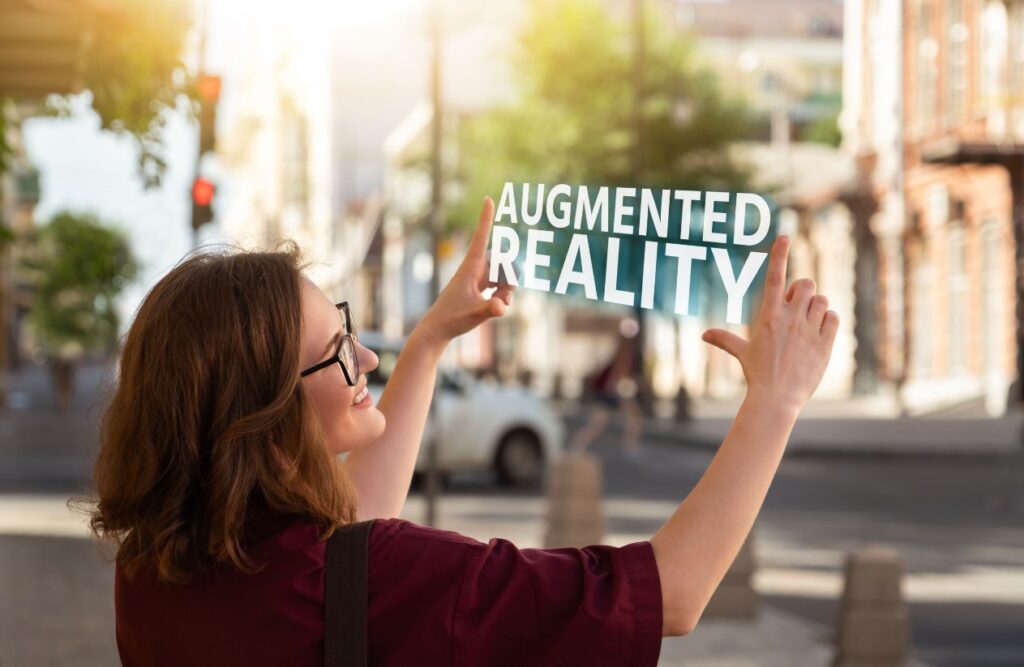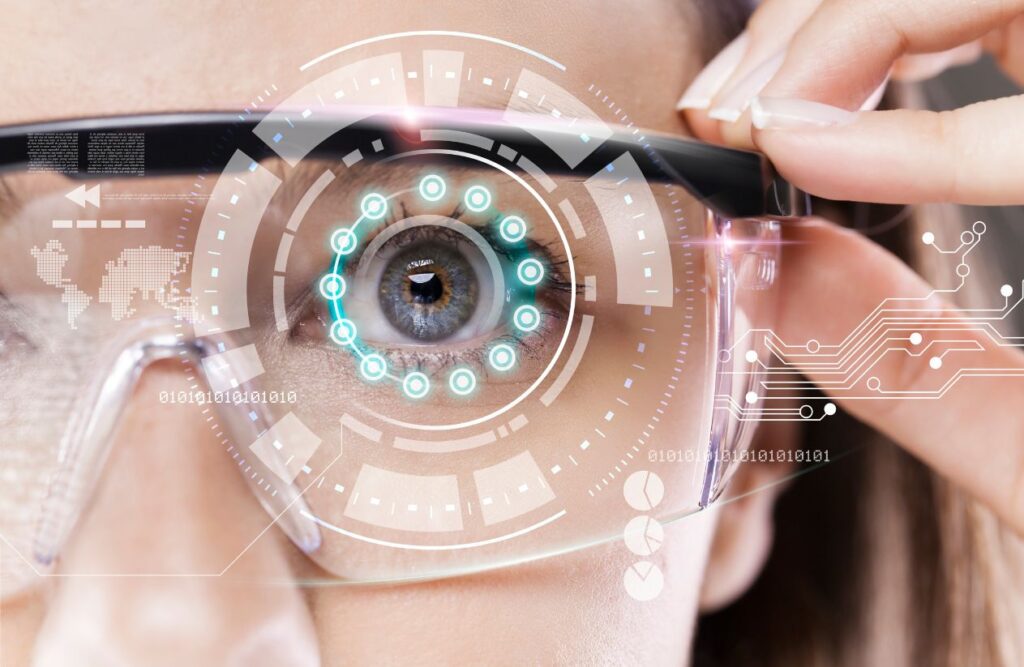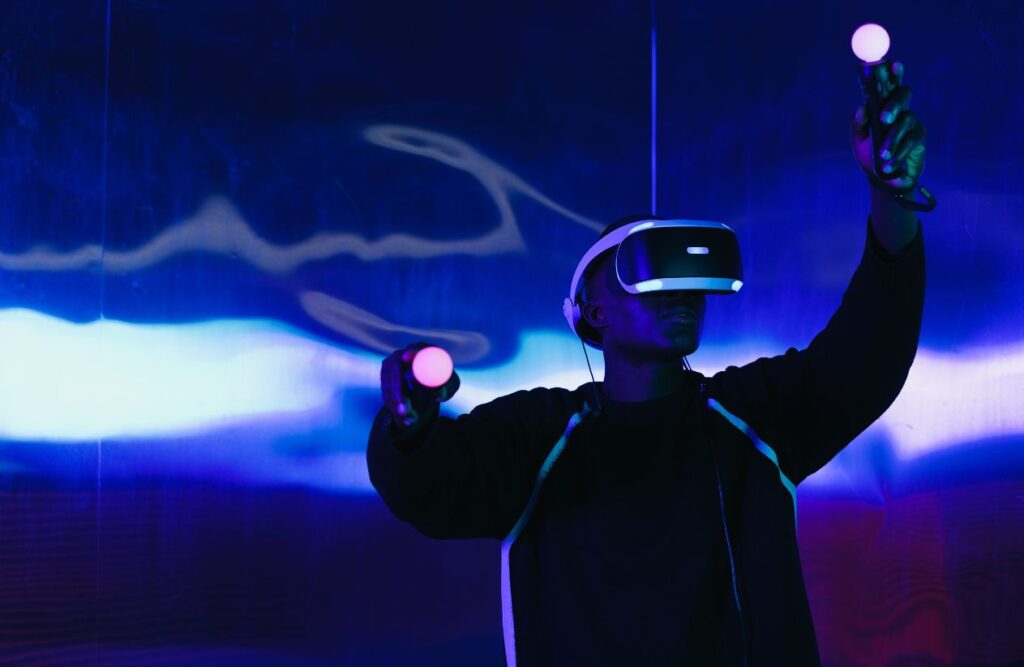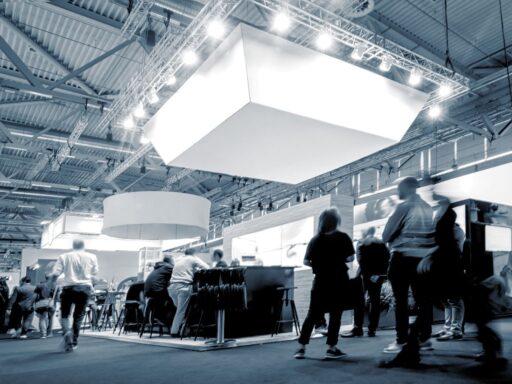Are you ready to revolutionize your events and leave attendees in awe? In today’s fast-paced world, the events industry is constantly seeking innovative ways to create memorable experiences.
Enter augmented reality (AR), a cutting-edge technology that seamlessly blends the digital and physical worlds. AR has immense potential to transform how we experience events, offering exciting possibilities for engagement, interaction, and information delivery.
This blog post will be your comprehensive guide to harnessing the power of augmented reality in events. From understanding its core concepts to practical implementation strategies, we’ll explore how AR can elevate your events and set you apart in the industry.
Why Augmented Reality is a Game-Changer for Events

Augmented reality is rapidly changing how we experience events, offering incredible opportunities to create more immersive, engaging, and valuable experiences. Let’s explore the key ways AR is revolutionizing the events industry.
Creating Unforgettable Experiences
AR’s ability to blend digital elements with the real world opens up exciting new possibilities for event planners. By overlaying interactive content onto the physical environment, AR can transform ordinary events into truly unforgettable experiences. Imagine attendees using their smartphones to:
- Explore interactive venue maps: No more fumbling with paper maps! AR can provide dynamic, 3D maps that guide attendees through the venue, highlight points of interest, and even offer personalized recommendations.
- Witness 3D product demonstrations: Instead of static displays, AR allows attendees to interact with virtual product models, exploring features and functionalities in an engaging, hands-on way.
- Experience holographic presentations: AR can bring presentations to life with stunning 3D visuals, creating a more captivating and memorable experience than traditional slideshows.
Boosting Attendee Engagement and Interaction
AR not only enhances the visual appeal of events but also fosters greater attendee engagement and interaction. By incorporating AR into event experiences, organizers can encourage attendees to actively participate and connect with each other in new ways. Here are a few examples:
- AR-enhanced business cards: AR can transform business cards into interactive tools that display digital portfolios, social media profiles, and other relevant information with a simple scan.
- Interactive games: AR can turn any event into a playful and engaging experience with interactive games, scavenger hunts, and challenges that encourage attendees to explore their surroundings and connect with others.
- Personalized content: AR can deliver tailored information and experiences to individual attendees based on their preferences, interests, and past interactions, creating a more relevant and engaging experience. The use of augmented reality for events is growing rapidly.
Providing Value and Enhancing Learning
AR’s ability to overlay digital information onto the physical world makes it a powerful tool for enhancing learning and delivering valuable content at events. Whether it’s a conference, workshop, or training session, AR can make complex information more accessible, engaging, and memorable. Consider these applications:
- AR overlays for presentations: Speakers can use AR to overlay 3D models, charts, and other interactive elements onto their presentations, making the content more dynamic and engaging.
- Virtual tours: AR can transport attendees to different locations or time periods, providing immersive virtual tours of historical sites, museums, or even future developments.
- Interactive training modules: AR can enhance training sessions with interactive simulations, allowing attendees to practice skills and procedures in a safe and engaging environment.
Related Content:Embracing the Future: How AI is Transforming Event Technology
Planning and Implementing AR at Your Event

Integrating AR into your event requires careful planning and execution. To harness the power of augmented reality in events, consider these key steps:
Defining Your Event Goals and AR Objectives
Before diving into the technical aspects, it’s crucial to define your event goals and how AR can help achieve them. Ask yourself:
- What are the primary objectives of your event? (e.g., increase brand awareness, drive sales, educate attendees)
- How can AR enhance the attendee experience and contribute to these goals?
Identify specific, measurable, achievable, relevant, and time-bound (SMART) objectives for your AR implementation. For example:
- Increase attendee engagement by 20% using AR interactive games.
- Generate 15% more social media shares through AR photo opportunities.
- Improve product knowledge retention by 30% with AR demonstrations.
Choosing the Right AR Technology and Platform
Several AR technologies and platforms are available, each with its strengths and weaknesses. Here’s a brief overview:
- Marker-based AR: This technology uses specific visual markers (like QR codes) to trigger AR experiences. It’s relatively simple to implement but requires users to scan markers.
- Markerless AR: This technology uses a device’s camera and sensors to recognize and track real-world objects or environments, allowing for more seamless AR experiences.
- Location-based AR: This technology uses GPS and other location data to trigger AR content based on the user’s location, often used for wayfinding and location-specific information.
When selecting an AR platform, consider these factors:
- Ease of use: How easy is it to create and manage AR content on the platform?
- Scalability: Can the platform handle a large number of users and complex AR experiences?
- Compatibility: Does the platform support a wide range of devices and operating systems?
- Cost: What is the pricing structure of the platform, and does it fit your budget?
Creating Compelling AR Content
The success of your AR implementation hinges on the quality of your AR content. To create engaging experiences:
- Focus on providing value: Ensure your AR content offers something useful or entertaining to attendees, such as exclusive information, interactive games, or helpful tools.
- Use high-quality visuals: Invest in professional design and development to create visually appealing and immersive AR experiences.
- Keep it simple and intuitive: Design AR interactions that are easy to understand and use, with clear instructions and intuitive controls.
- Design for user experience: Prioritize a smooth and enjoyable user experience.
Testing and Optimization
Thorough testing is essential to ensure your AR experiences work flawlessly at your event.
- Test your AR content on various devices and operating systems to ensure compatibility.
- Test in different lighting conditions and environments to optimize performance.
- Gather feedback from test users and make necessary adjustments.
- Optimize your AR experiences for speed and performance to minimize loading times and technical issues.
Related Content:The Beat of Innovation (Cutting-Edge Tech Transforming Live Performances)
Real-World Success Stories of AR in Events

The best way to understand the impact of AR is to look at how it’s being used in the real world. Here are a few examples of events that have successfully incorporated AR to create amazing experiences:
AR at Music Festivals: Immersive Stage Experiences
Music festivals are all about creating a unique and unforgettable atmosphere, and AR can take that to the next level. At Coachella, one of the world’s most famous music festivals, attendees were able to use their smartphones to unlock incredible AR experiences.
By pointing their phones at stages and art installations, festival-goers could see stunning digital overlays that blended seamlessly with the real-world environment. This enhanced the visual spectacle of the performances and created a shared experience that attendees could enjoy and share on social media.
This is a great example of how augmented reality for events can transform the way people experience music and art.
AR at Product Launches: Interactive Demonstrations
Product launches are a critical moment for businesses, and AR can help create a buzz and generate excitement. A leading automotive brand used AR to launch its latest model in a way that had never been done before.
Event attendees could use an app to explore the car’s features in detail, customize its appearance, and even take it for a virtual test drive.
This interactive experience not only made the launch more memorable but also gave potential customers a fun and engaging way to learn about the product.
AR in Educational Conferences: Augmented Learning
AR is also making waves in the world of education, and conferences are a great place to showcase its potential. At a medical conference, AR was used to enhance workshops and presentations.
Attendees could use their devices to visualize complex surgical procedures in 3D, allowing them to get a much deeper understanding of the subject matter than they would from traditional lectures and diagrams. This technology is changing the way professionals learn and develop their skills.
Addressing Common Concerns and Challenges

While the potential of AR is undeniable, event planners may have some concerns about implementing it. Let’s address some of the most common challenges:
Budget Considerations for AR Implementation
It’s true that implementing AR can involve costs, but it doesn’t have to break the bank. Here’s a breakdown of the factors that influence cost:
- Content complexity: Simple AR experiences are generally less expensive than complex, highly interactive ones.
- Platform choice: Different AR platforms have different pricing structures, ranging from free to enterprise-level.
- Development costs: You can develop AR experiences in-house (if you have the expertise) or hire a developer or agency.
- Hardware requirements: While most attendees can use their own smartphones, you might need to provide additional hardware (like tablets or AR glasses) in some cases.
To maximize ROI and find cost-effective solutions, consider these tips:
- Start small: Begin with a simple AR experience and gradually expand your implementation as you see results.
- Utilize existing resources: Explore free or low-cost AR platforms and tools.
- Partner with sponsors: Collaborate with sponsors to help fund your AR initiatives in exchange for branding opportunities.
- Focus on value: Prioritize AR experiences that provide clear value to attendees and align with your event goals.
Technical Requirements and Infrastructure
Implementing AR effectively requires a solid technical foundation. Here are some key considerations:
- Wi-Fi connectivity: A stable and robust Wi-Fi network is essential to ensure smooth AR experiences, especially for events with a large number of attendees.
- Device compatibility: AR experiences should be compatible with a wide range of smartphones and tablets (both iOS and Android) to ensure maximum accessibility.
- Battery life: AR applications can be battery-intensive, so it’s a good idea to provide charging stations or advise attendees to come with fully charged devices.
- Technical support: Have a plan in place to provide technical support to attendees who may encounter issues with the AR experiences.
Ensuring a Seamless User Experience
To ensure that your augmented reality in events is a success, it’s crucial to prioritize user experience. Here’s how:
- Provide clear instructions: Make sure attendees know how to access and use the AR features. Use clear, concise language and visual aids.
- Keep it intuitive: Design AR interactions that are easy to understand and use. Avoid complex gestures or controls.
- Offer alternatives: Provide alternative ways for attendees to access the same information or experience, in case they don’t have a compatible device or prefer not to use AR.
- Gather feedback: Encourage attendees to provide feedback on their AR experiences and use this feedback to make improvements.
Also read our article about“Essential Tips for Aspiring Mobile DJs”
The Future of AR in the Events Industry

The future of AR in the events industry is incredibly promising. As the technology continues to evolve, we can expect even more immersive, interactive, and personalized experiences. Here are some emerging trends and possibilities:
- 5G and enhanced connectivity: The rollout of 5G networks will enable faster data transfer speeds and lower latency, leading to more seamless and responsive AR experiences at events with large crowds.
- AI-powered AR: Artificial intelligence (AI) will play a growing role in AR, enabling more intelligent and personalized interactions. For example, AI could be used to recognize attendees’ faces, provide customized information, and even adapt AR content in real-time based on user behavior.
- AR cloud: The development of an “AR cloud” will allow AR experiences to be shared and accessed across different devices and locations. This will open up new possibilities for collaborative and persistent AR experiences at events.
- Wearable AR devices: While smartphones are currently the primary device for experiencing AR, we can expect to see the rise of more sophisticated wearable AR devices, such as smart glasses. These devices will offer a more seamless and hands-free way to interact with AR content.
- Integration with other technologies: AR will become increasingly integrated with other event technologies, such as virtual reality (VR), IoT (Internet of Things), and blockchain. This integration will create even more powerful and innovative event experiences.
The use of augmented reality for events is not just a trend; it’s a fundamental shift in how people experience gatherings. By embracing these emerging trends, event planners can stay ahead of the curve and create truly unforgettable experiences that will shape the future of the industry.
Conclusion
From immersive stage experiences at music festivals to interactive product launches and augmented learning at conferences, AR is transforming events. This technology enhances attendee engagement, provides valuable learning opportunities, and creates unforgettable moments.
As we’ve explored, embracing augmented reality in events requires careful planning, the right technology, and a focus on delivering high-quality content.
By addressing common concerns and staying ahead of emerging trends, event planners can unlock AR’s full potential. The future of events is here, and it’s augmented.
Augmented Reality in Events- FAQs
Augmented Reality (AR) is rapidly transforming the landscape of event planning and execution, offering immersive and interactive experiences that captivate attendees like never before.
As an event professional, integrating AR into your events can seem daunting at first.
However, with a clear understanding and strategic approach, leveraging this innovative technology can set your events apart, making them more engaging, memorable, and impactful.
Below are some of the most frequently asked questions about incorporating augmented reality into events.
How Does Augmented Reality Enhance Event Experiences?
AR adds digital elements (holograms, 3D models, etc.) that viewers see overlaid on their real-world surroundings, usually through their phone. This makes presentations more exciting, exhibits more interactive, and the whole event more engaging. AR turns a space into a dynamic playground, promoting exploration and even social media sharing.
What Are the Key Considerations When Implementing AR in Events?
Start with your goal – more engagement, unique experiences, and educational tools? This guides what AR elements you’ll create. Consider technical needs (strong Wi-Fi, devices for guests). Budget matters – AR can be cost-effective, but custom experiences get pricier. Lastly, think about how tech-savvy your audience is, as this impacts how readily they’ll use the AR features.
Can AR Be Used in Both Virtual and Physical Events?
Definitely! At physical events, AR livens up posters, or the space itself, adding an element of surprise. In virtual or hybrid events, AR bridges the gap, making remote viewers feel more connected to the content. Virtual AR can even create shared networking spaces, fostering greater engagement.






